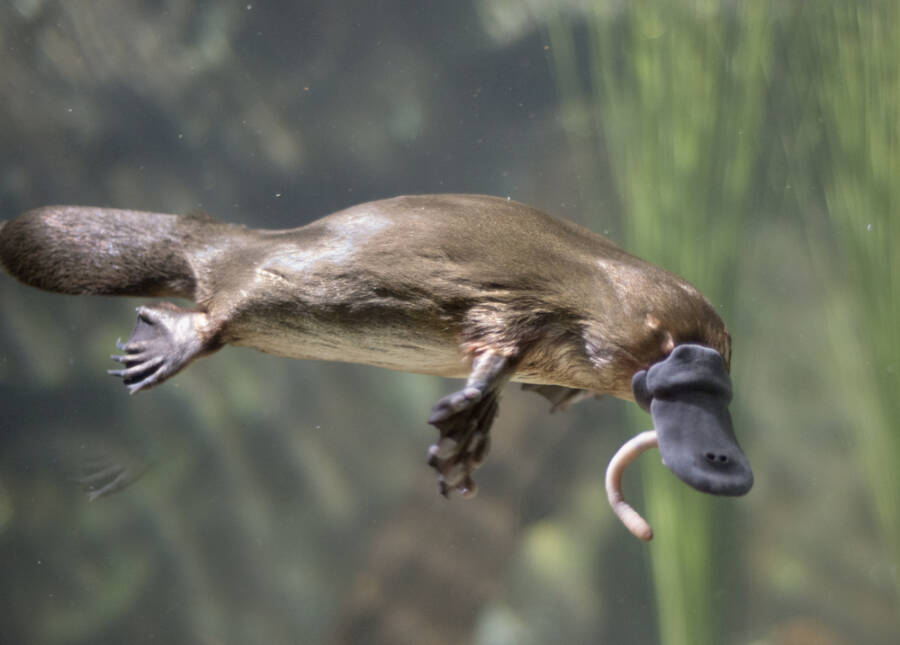These are some real things people couldn’t believe!
Belief is something fluid, and this is not just a random mystical quote. That’s how the world works, and this is one of the most fascinating things that happens. But it is also one of the most confusing things ever.
There are some things in this world that are known to be real mind-benders because some claim that they are true, but they sound so made up that no one believes them. The thing is that what we are about to present today is completely true, and this is what science says.
For example, for centuries, people blindly believed that the Sun revolved around the Earth. This is not true, and we are all aware of it now. But there are many more examples like these. Some of them are truly unbelievable, and this is why we think they are worthy of our attention.
Here are some real things you might believe are fake, but they are totally true!

Citrus cures scurvy
This is known as a disease that plagued the sailors back in the day. Right now, scurvy is not a major concern, and even if someone had scurvy, we now have the cure for it. The cure is vitamin C, but this was first isolated in 1928!
During the Age of Discovery, this disease killed a lot of sailors, and nobody knew what was happening. Their bodies simply began to slowly break down, and in the end, the men were gone. Finding a reasonable explanation was not easy, and those who needed to navigate for months were terrified and hoped not to be the next target of the mysterious disease.
Throughout history, people tried various treatments for scurvy, from bloodletting and eating fresh meat to fresh air and exercise, but nothing seemed to work properly. The only thing that was effective was citrus fruit. This was weird and was not proven to be real until Royal Navy surgeon James Lind tried to treat a whole crew by instructing them to drink lemon juice and eat oranges.
Unfortunately, even though this was one of the real things that truly worked, the discovery made by James Lind was lost in time, and it was all caused by a ton of false and conflicting theories, some of them being supported by James himself! We know that this sounds revolting. From a study of 450 pages, he devoted only 4 pages to talking about the effectiveness of citrus in treating scurvy.
Vampire bats
A blood-sucking bat sounds like something that will never be found on a list of real things, right? This is also what people from England believed for a very long time. And after all, yes, this might sound a little far-fetched, but we live in a world full of crazy possibilities. But the beliefs of people back then were much narrower than those we have today, so it is simpler to understand why they reacted like this.
Compared to Europeans, Native Americans were aware of the real deal because the blood-sucking bats were there, and they were able to see them with their own eyes. What Europeans knew was all based on myths and not on real things.
The legends were simple. The bats followed lost travelers, and while they were sleeping, the creatures depleted them of all their blood and ended their lives. Those from England didn’t believe a word of this until Charles Darwin observed this phenomenon with his own eyes during the famous voyage of the Beagle. He wrote about a vampire bat that attacked their horse and later about the wound that got infected.
Giant sequoia trees
These trees are mesmerizing, and they are among the real things of this world. Well, this was not always the case. Imagine telling someone that you’ve found some 300-foot-tall trees somewhere in the forest. Kind of usual, right? Now, imagine you are telling your friends this. Would they believe you? Probably not.
This was what happened to Augustus T. Dowd in 1825. He was in Northern California and was following a wounded bear. During this adventure, the man stumbled upon an unfamiliar sight. He found a forest with trees so tall he was almost sure he was hallucinating!
As you can imagine, after seeing this, he totally forgot about the bear and rushed to the camp where his fellow colleagues were waiting for him. Augustus told them about the fantastic trees, and according to chronicler James M. Hutchings, they made fun of him and believed that he was inventing crazy stories.
A few days later, Dowd told his colleagues that he had managed to kill the biggest grizzly he had ever encountered, and since their help was clearly needed, they followed him into the woods. This is how they arrived in the sequoia tree forest, and they were in awe. Now, Dowd was not the first person of European descent to see these trees and how they were real things, but he was the first one people believed in the end.
Great Britain
Ok, we know that Great Britain being a hoax doesn’t sound like something that really happened, but it did. Before the British were the land of disbelievers, their land was the land whose existence was doubted. This is truly ironic, but this is the truth! Some people were convinced that Britain was not one of the real things and believed that this whole piece of land was a big hoax.
The high society of Europeans during antiquity was sure that this not-so-distant land was just a weird fantasy. Some explorers told everyone about their experiences with this mysterious landmass that was located at the end of the world, but considering this description, the Romans believed that this was just a simple fantasy.
The Roman historian Plutarch, when he was writing about the invasion of Britain led by Caesar that took place in the 1st century BC, claimed that all of the writers before him doubted the existence of this land, and as a result, they were also unsure if Caesar was leading campaigns there. They believed that they were all lies.

The platypus
You know now very well that when you say real things, the platypus is among them because this is a legitimate animal that exists in this world. This is indeed a weird creature, even today, when we know all we can possibly know about it.
The platypus is an animal that is native to Australia, the land of all possibilities when it comes to fantastic creatures. The skepticism of Europeans when they first received the first specimen is easy to understand.
This mammal looks like a duck and a beaver had a baby, and this is why people find it difficult to take the platypus seriously. The first scientific description of the platypus was a novelty, and people found it rather amusing and unreal. This first description was written by Captain John Hunter to Britain and was based on a skin he received in 1798.
If you want to read more interesting facts like these, you can start with this book: Fascinating Human History: 1000 Intriguing Facts and 101 Strange Historical Moments (Bringing History to Life)
You should also read: 7 Things From Outer Space That Will Destroy the World














